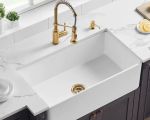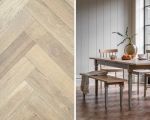- 1-Understanding-energy-efficient-lighting
- 2-Types-of-energy-efficient-lighting-solutions
- 3-Benefits-of-implementing-energy-efficient-lighting
- 4-Practical-tips-for-choosing-and-installing
- 5-Real-world-examples-and-success-stories
1. Understanding Energy-Efficient Lighting
Energy-efficient lighting solutions for the home have become increasingly important as homeowners seek ways to reduce their energy consumption and environmental footprint without sacrificing comfort or style. These lighting options utilize advanced technology to provide the same or better illumination while consuming less electricity.
Understanding the basics of energy-efficient lighting allows homeowners to make informed choices that benefit both their wallets and the planet.
2. Types of Energy-Efficient Lighting Solutions
Several types of lighting solutions fall under the energy-efficient category, each offering unique advantages.
2.1 LED Bulbs
Light Emitting Diode (LED) bulbs are the most popular and widely used energy-efficient lighting. They consume up to 80% less energy than traditional incandescent bulbs and have a much longer lifespan.
2.2 Compact Fluorescent Lamps (CFLs)
CFLs are another common alternative that uses less energy and lasts longer than incandescent bulbs, though they contain small amounts of mercury requiring careful disposal.
2.3 Smart Lighting Systems
Smart lighting integrates with home automation systems, allowing users to control brightness, color temperature, and schedules remotely, optimizing energy use even further.
3. Benefits of Implementing Energy-Efficient Lighting
Adopting energy-efficient lighting solutions brings several tangible benefits.
3.1 Significant Energy Savings
Reduced electricity consumption translates directly to lower utility bills, making these solutions economically attractive over time.
3.2 Environmental Impact
Lower energy use means fewer greenhouse gas emissions from power plants, contributing to environmental conservation and combating climate change.
3.3 Enhanced Lighting Quality and Flexibility
Modern energy-efficient bulbs offer improved color rendering and dimming options, enhancing the ambiance and functionality of living spaces.
4. Practical Tips for Choosing and Installing Energy-Efficient Lighting
Choosing the right energy-efficient lighting for your home requires considering factors such as room function, fixture compatibility, and personal preferences.
4.1 Assess Lighting Needs by Room
Different areas require different lighting levels; for example, kitchens need bright, focused light, while bedrooms benefit from softer, warmer tones.
4.2 Select Compatible Fixtures
Ensure that your fixtures support the chosen energy-efficient bulbs, especially when using dimmers or smart controls.
4.3 Professional Installation and Maintenance
While many energy-efficient bulbs are easy to install, complex smart systems may require professional assistance to optimize performance and integration.
5. Real-World Examples and Success Stories
Many homeowners have reported substantial benefits after upgrading to energy-efficient lighting.
5.1 The Johnson Family’s Energy Bill Reduction
After replacing all incandescent bulbs with LEDs and installing smart lighting controls, the Johnsons saw their monthly energy bills drop by nearly 30%, alongside improved lighting comfort.
5.2 Community-Wide Green Initiative
A neighborhood project encouraging energy-efficient lighting installations led to collective reductions in power usage and fostered environmental awareness among residents.
For tailored advice, product recommendations, and professional installation services of energy-efficient lighting solutions for the home, Improvement is your go-to resource to help create a brighter, greener living environment.








